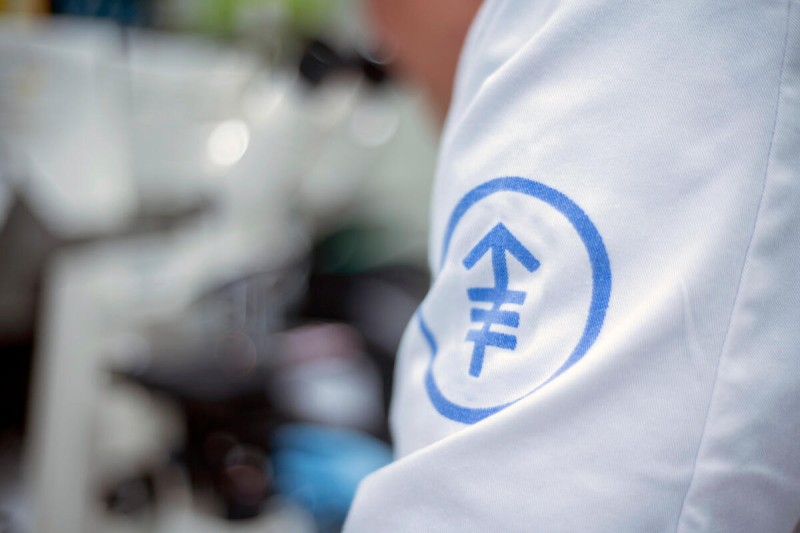
New research from Memorial Sloan Kettering Cancer Center (MSK) uses saturation genome editing to better understanding of the RAD51C gene, which has been linked to higher risks of breast and ovarian cancer; sheds new light on brain metastasis; and finds a commercially available contrast dye could help surgeons better separate cancer from healthy tissue.
Saturation genome editing method yields new findings about the RAD51C gene
Similar to the BRCA1 and BRCA2 genes, pathogenic mutations in RAD51C are linked to higher risks of breast and ovarian cancer due to impaired ability to repair damaged DNA. But more than half of RAD51C variants identified so far are classified as having “unknown significance” — meaning that their effects on human health are unclear.
To better understand these variants, a multicenter team of researchers — headed by David Adams at the Wellcome Sanger Institute in Cambridge, England, and including MSK investigator Maria Jasin, PhD, and her Cornell Biomedical Engineering graduate student Fang Zhang — used a method called saturation genome editing (SGE) to test the effects of more than 9,000 unique changes in the RAD51C gene and understand their impact. SGE is a CRISPR/Cas9-based method developed to functionally test the effects of large numbers of gene variants.
Using SGE, the investigators classified nearly 3,100 variants as harmful. By examining them in the context of the 3D structure of the RAD51C protein complexes, the team was able to explain why many of these variants are deleterious. Interestingly, however, for many other variants, the reason they are harmful remains uncertain. This opens up a clear avenue to dissect new roles for RAD51C in follow-up experiments. By using data from large ovarian cancer studies and genome databases, the researchers were able to find strong links between the harmful variants identified by SGE and specific cancer cases.
“This paper is one of first examples of using SGE to generate all the common variants found in populations and in cancers,” Dr. Jasin says. “This detailed analysis could help to clarify the significance of uncertain variants, especially variants that have been found in families with a history of cancer, and will be a powerful tool to dissect many other disease genes.” Read more in Cell.
Cancers use different strategies to form metastasis in the brain
The spread of cancer cells from a primary tumor to new parts of the body (metastasis) remains the most serious and deadly complication of the disease. That’s why researchers at MSK have increasingly focused on efforts to treat tumors and prevent their ability to spread by targeting the broader ecosystem with which they interact. Now a team led by Siting Gan, PhD, a postdoctoral researcher in the lab of senior study author Joan Massagué, PhD, has shed new light on the earliest stages of metastasis to the brain by examining differences in two major types of breast cancer: triple negative breast cancer and HER2-positive breast cancer. Using mouse models and human tissue samples, the scientists found that both tumor types employ a distinct strategy for colonizing the brain, and revealed key differences in how the two types organize their interactions with cells in the brain. Triple negative cancers, for example, tend to spread out in sheaths around blood capillaries that infiltrate the surrounding tissue, leaving the boundary between the tumor and healthy tissue less defined. HER2-positive cancers, on the other hand, tend to form compact tumor spheroids that are more segregated and defined. By illuminating the distinctive strategies and spatial organization employed by these two breast cancer subtypes, the researchers hope to help doctors to better treat or prevent brain metastases by being able to more precisely target vulnerabilities specific to each type. Read more in Cancer Cell.
A commercially available contrast dye could help surgeons better separate cancer from healthy tissue, MSK-led study finds
Florescence-guided imaging and surgery are frequently used in preclinical research, but there have been limitations that have prevented their adoption for clinical use. These approaches create a strong visual contrast, in real time, between tumors and surrounding tissue — allowing surgeons to more swiftly and confidently remove all signs of cancer while sparing as much healthy tissue as possible. Now a research team, led by senior study author Jan Grimm, MD, PhD, an MSK investigator, radiologist, and nuclear medicine physician, has demonstrated in mouse models that a commercially available contrast dye creates a strong visual distinction between cancer and surrounding tissues that could guide cancer screening, surgical resection, and even non-contact monitoring of wound healing through bandages. The dye, known as CJ215 stains cells undergoing apoptotic cell death — a hallmark of cancer — and was minimally taken up by healthy tissues in numerous laboratory models, including breast, prostate, fibrosarcoma, and colon cancers. The agent operates in the shortwave infrared spectrum, which allows for better depth penetration with less scatter and absorption, Dr. Grimm says. “[We] have yet to find a solid [tumor] model which CJ215 does not delineate,” the authors note. The findings suggest CJ215 could be a useful pan-cancer imaging agent with high selectivity across multiple use cases, which could help it win approval by the U.S. Food and Drug Administration and speed its translation from the lab to the clinic. The results will need to be replicated in larger mammals and in people, the scientists note. The dye is made by the French company Proimaging, and was provided to the researchers for the study. Read more in Nature Biomedical Engineering.